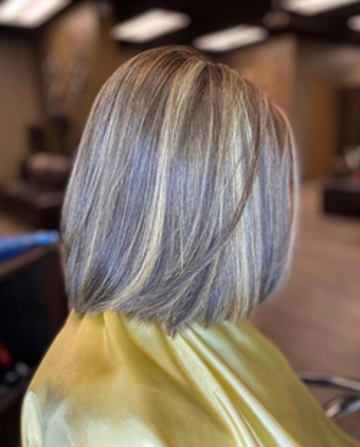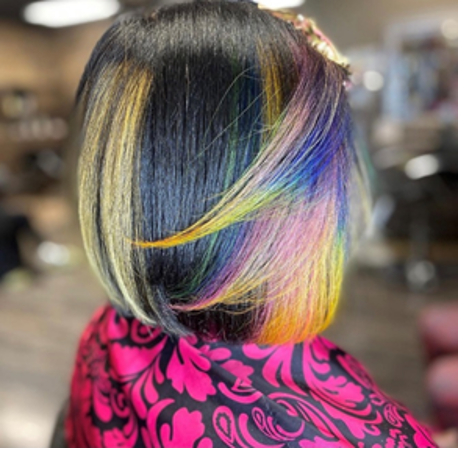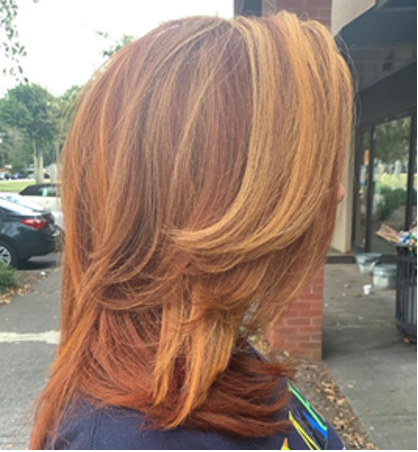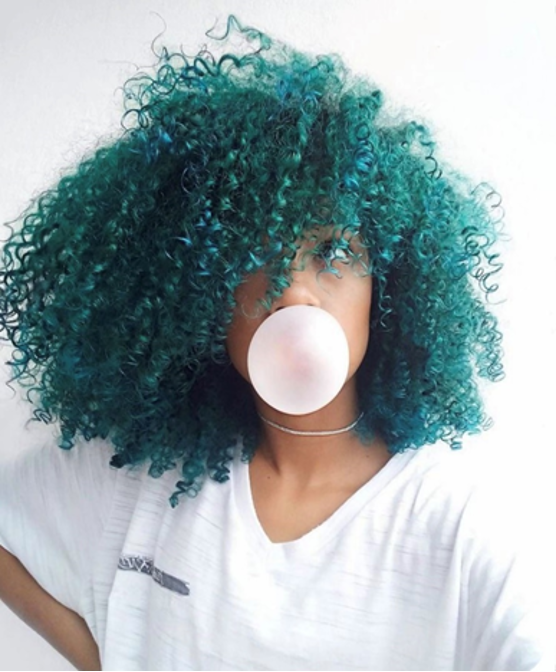
By Cameron Ziglar
We don’t have to tell you that color-treated hair requires extra TLC. Color on natural hair can be drying and stripping which can cause natural hair to be more susceptible to breakage when dyed. But don’t worry: Color on natural hair can be absolutely safe. You just have to take the right steps and work with a licensed professional to make sure you keep your strands healthy as you experiment with color. If you want to dye your hair with confidence, keep reading. There are only a few things you need to know before taking this step. We know the questions are hard to ask sometimes, that’s why we are here to ask them for you! How do we manage natural hair with color, or more importantly, bleach?
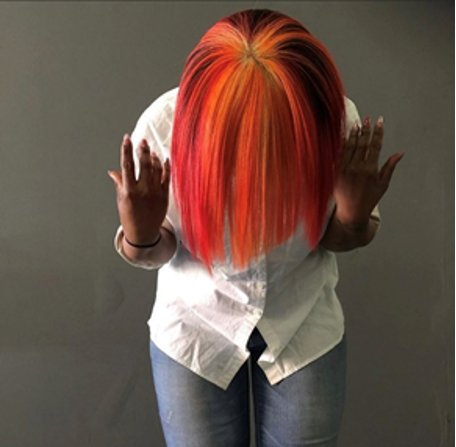
To get the answers, we consulted colorist Kyra Jones who is known in the hair industry as “Ky The HairShrink.” She’s a natural hairstylist and color specialist located in Winston Salem, North Carolina. Her more popular looks are achieved with color, cutting, and creative styling. But most importantly, most of her success is centered around her clientele leaving with healthy hair. Here, she answers all our question on natural hair and color.
Q: Is it safe for natural hair to be colored or bleached?
A: Yes! Adding color and bleach to natural hair is safe as long as a professional is doing it. Taking our natural hair out of its natural state at any point in time is going to lead to damage. However, having a professional hairstylist or colorist in charge of this is vital. Color and bleach are both chemicals that can be dangerous and lead to more damage than normal if not administered correctly. With a professional in charge who has the knowledge of how to manage these chemicals, they can regulate wear and tear, which can keep your hair healthy.
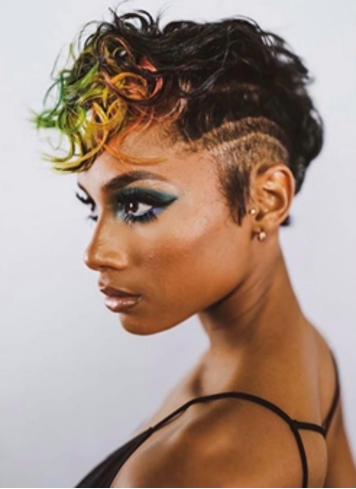
Q: What precautions must be taken prior to getting color?
A: The number one thing you need prior to getting color: Healthy hair. The chemicals in dyes and bleach can cause breakage on weak or brittle hair so, you want to make sure you’re starting the process with strong, healthy hair. That’s why it’s recommended to have a good relationship with a stylist first. Having a relationship with a stylist who knows your hair is vital when transitioning from being natural to being natural with color and chemicals. A stylist can give the best advice about whether or not your hair is ready to handle color. Plus, having a stylist ensures that you more than likely already have healthy hair and, if not, the stylist can get you on the right track with protein and amino acid treatments. If your hair is already compromised, the color could possibly cause more damage to your hair. Working with a pro who knows your hair—and your hair goals—can help you achieve the style you want in the safest way possible.
The best thing you can do as a client is to educate yourself prior to color services. Do research! Know your hair, know what it is that you want to be done to your hair, and find out if you qualify for the treatment by doing a consultation first. Color is an investment. If you aren’t prepared, you may end up paying for additional services to keep your hair healthy in the process. And keep in mind: All color options can’t be achieved in one appointment, so set realistic expectations of how long it may take to get to your shade of choice.
Q: Is box color safe?
A: Box color is typically not a good idea for women of color who have natural hair. More importantly, box color is not the best option because it is typically being administered by the client themselves. When applying chemicals to your hair, it is important to have that treatment done by a professional. Handling chemicals on your hair can be dangerous. Additionally, box color is harsher on hair than salon-grade color. It is made with metals that can leave hair brittle and dry. Also, if you are looking to change your hair color after using box color, it’s a lot harder to remove and reverse. Usually, when a client is trying to use professional color after box color, it adds a lot of stress to the hair, and stress usually leads to damage.
Q: How do “naturalistas” maintain colored or bleached hair?
A: Moisturize, Moisturize, Moisturize! It is extremely important to moisturize after having color treatment. Especially with brighter colors, because they can sometimes cause dryness. Moisturizing is important. And it’s more important to know the difference between oils and creams. Oils are not moisturizers. Oils aid moisture and act as a sealant, however, creams are the moisturizers our hair needs.
Once your hair is dyed, it’s important to have frequent stylist visits. Professional treatment and maintenance are very important to keeping color vibrant and keeping hair healthy and strong. If you can’t afford to visit a stylist at least once a month, consult with your stylist for at-home instructions, like using sulfate- and paraben-free shampoo. When washing hair, use cool water. (Hot water opens your pores and causes the color to fade and bleed.) Lastly, keep up with protein treatments. Protein prevents hair from shedding and keeps it strong and healthy.
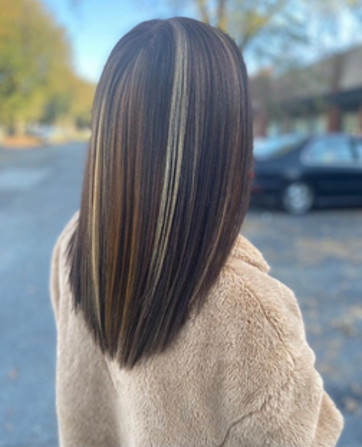
Q: Should we avoid heat?
A: No, you don’t have to avoid heat when your hair is colored. Instead, regulate the amount of heat used. Heat can result in damage, but if you can regulate the amount of heat you use on your natural hair, you can control the damage. When using heat, allow a professional to do so to avoid heat damage. However, if done at home, keep the heat at 300 degrees or below (check out our Flatiron Cheat Sheet to find the right temp for you). And avoid using heat daily.
Q: What about relaxed hair? Is color or bleach appropriate?
A: If you have relaxed hair, you can have color too! Before choosing to put color in your hair, see a stylist for a consultation. Color and bleach are not healthy on everyone’s hair, especially when you already have chemicals in your hair from the relaxer. If you are eligible for a color with a relaxer, be sure to get a relaxer that isn’t at its full strength so that your hair can consume all chemicals healthily. Usually, relaxers with low PH or mild relaxers are safe to use with color and bleach. If getting color, wait at least two weeks or more after you’ve received a relaxer. There are special cases when you can receive color and a relaxer on the same day, however, always consult a trusted stylist first.
Let’s recap! To color with care, remember:
- Have a trusted stylist
- Schedule a color consultation before any dye jobs.
- Never receive chemical services from a stylist who doesn’t know you or your hair!
- Form a healthy hair relationship with a stylist who understands your hair, your lifestyle/styling preferences, and your hair goals.
- Know your hair
- Do your research
- Have a healthy at-home hair regimen
